

Escape the Apocalypse – Team Building Activity
Overview: Assemble the team in a small meeting room and “lock” them inside. The team members then have 30 minutes to solve a series of puzzles and clues to “unlock” the door and escape a zombie apocalypse. A volunteer zombie will hold onto a rope in the corner of the room. The zombie will start off with half a yard of slack in the rope. Every five minutes the zombie’s rope will extend by an additional half a yard. As time passes, the zombie will be able to infect/tag healthy team members. If a team member is tagged, they are then infected and will no longer be able to help the group physically “escape” the apocalypse. The infected zombies must remain in the corner of the room and will only be able to assist the team through verbal communication. Once the team solves the final puzzle and finds the key, they can escape the room safely and are free from the apocalypse! If the team does not find the final key, they will succumb to the apocalypse and each member will become a zombie!
Equipment Required :
- 1 Rope (3 yards long)
- 5-10 Clues or puzzles
- Clock or Stopwatch
Space Required : Small Indoors
Group Size : 5 to 7 People
Total Time : 45 minutes
- 5 minutes to brief the activity
- 5 minutes for the teams to brainstorm
- 30 minutes for the team to solve the puzzles, find the key to “escape” the room
- 5 minutes to review
Instructions
- Before the start of the activity identify a small room in which you can host your apocalyptic adventure. A conference room is an ideal setting.
- Once you identify the room, risk assess the area and remove any potential hazards.
- Hide 5-10 Puzzles and/or clues that lead to a key that the team can use to “escape”.
- Gather the team into the room and brief the activity:
We are in the middle of a zombie apocalypse and the zombies have captured your entire team in this conference room! The zombies left to gather additional healthy humans to capture…but they have hidden a key somewhere within these four walls. There is no time to waste, they will return for feeding time return in 30 minutes! You have the next 30 minutes to work as a team to find the key and escape to safety. There is one catch, the zombies left a security guard on duty. The zombie guard will be tied to the wall in the room and for every 5 minutes that you remain in this room, the slack in his rope will extend by half a yard. If the zombie touches you, you will be infected and sent to the corner of the room. Once infected, you may not physically help your team escape, you can only verbally communicate.”
- Ask for a volunteer or assign one team member to act as the Zombie. Situate this team member in a corner of the room.
- Start the timer. Make sure the timer is visible to the group and “lock” the door.
- Increase the slack in the zombie rope by half a yard every 5 minutes that the team remains in the room without solving the final puzzle.
- The activity ends when the team solves the final puzzle and “escapes” or when the 30 minutes has elapsed (whichever occurs first).
- Debrief the challenge.
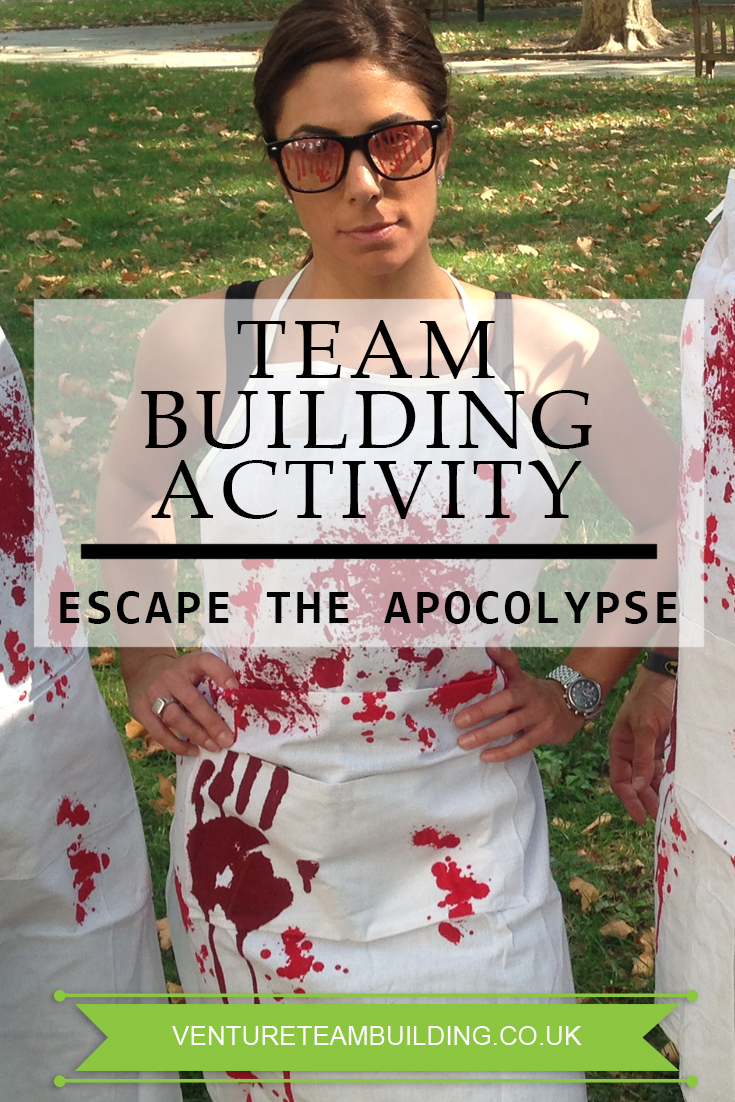
Related Posts

How To Play The Empire Game: Fun Group Game

Diving into the Depths: How to Play Sharks and Minnows

The Red Light Green Light Game
Type above and press Enter to search. Press Esc to cancel.
Session expired
Please log in again. The login page will open in a new tab. After logging in you can close it and return to this page.
National Geographic Education Blog
Bring the spirit of exploration to your classroom.

Survive the Zombie Apocalypse with Exploration Skills
Many of the skills needed for your favorite adventure sports will prove useful during the (so-far) unlikely incidence of a zombie apocalypse. So get outside, get adventuring, and get ready. (National Geographic)
Where are nature’s real walking dead?
Teachers, scroll down for a quick list of key resources in our Teachers Toolkit.

Discussion Ideas
- The Oxford English Dictionary defines the supernatural, fictional creature as “a soulless corpse said to have been revived by witchcraft.” Modern zombies have also been revived toxins, radiation, and general mad-science mayhem.
- The modern zombie owes a debt to Haitian folklore and mythology, but not to Haitian vodou (voodoo), a religion with which the concept of zombies is often mistakenly associated.
- The legend of the zombie is variously rooted in the chemistry of psychotropic substances, neurotoxins , mob mentality, or mental illness.
- Wikipedia identifies a zombie apocalypse as when “a widespread rise of zombies hostile to human life engages in a general assault on civilization.” In most zombie apocalypse ecosystems, zombies prey on living humans, and can also turn living humans into zombies themselves. Everyone is at risk of becoming what they fear and loathe most: It’s an apocalypse .
- Night of the Living Dead (1968) is an American film that basically defined the modern “ cannibalistic cadaver” zombie.
- Train to Busan (2016) is a terrific Korean zombie movie that doubles as a runaway train movie.
- S haun of the Dead (UK, 2004) and Juan of the Dead (Cuba, 2010) show that zombie comedies are a global phenomenon.
- The Walking Dead is the most popular zombie series around these days.
- Game of Thrones ’ “Walkers” are basically ice zombies.
- iZombie, like The Walking Dead , was adapted from comic books.
- Resident Evil , a mass media franchise from Japan, is on its seventh iteration.
- Call of Duty has zombie modes.
- Minecraft is set in a zombie apocalypse.
- Frankenstein, of course, has a monster that can be interpreted as a zombie.
- World War Z imagined the zombie apocalypse as a pandemic.
- Pride and Prejudice and Zombies blends the genres of romance, satire, and horror.
- You need to escape! Zombies comfortably live in all Earth’s ecosystems, have incredible endurance, and, depending on your apocalypse, can be very fast. The athleticism and quick thinking associated with adventure sports might help you outwit the undead.
- basic survival skills. foraging , fishing, knowing how to navigate without a GPS. We can help you with that!
- running. How does an ultramarathoner prepare for 100-mile races?
- mountaineering. How do climbers summit 8,000-meter peaks without supplemental oxygen?
- paddling. How did a kayaker paddle across the Atlantic to become “Adventurer of the Year”?
- paragliding. This is also a good skill to have for photographers.
- STEM! A background in electrical engineering might help you establish well-lit spaces, protective fences, and luxuries like cooking on a stovetop. A background in chemistry might help you identify what toxins repel or eliminate zombies.
- money, of course. The Zombie Research Society ’s list of zombie survival tips includes zombie-proofing your home, which may be cost-prohibitive for most survivors.
TEACHERS TOOLKIT
National Geographic: Use These Adventure Skills to Survive the Zombie Apocalypse
The Zombie Research Society
National Geographic: Nature’s Walking Dead: Real-Life “Zombies”
National Geographic: Map Skills for Elementary Students
National Geographic: Going the Distance
National Geographic: Conquering K2
National Geographic: Alexksander the Great Wins ‘Adventurer of the Year’
National Geographic: Gobi Desert Paragliding
Share this:
- Click to share on Reddit (Opens in new window)
- Click to share on Twitter (Opens in new window)
- Click to share on Facebook (Opens in new window)
- Click to share on Pinterest (Opens in new window)
- Click to share on LinkedIn (Opens in new window)
- Click to share on Tumblr (Opens in new window)
- Click to share on WhatsApp (Opens in new window)
- Click to share on Pocket (Opens in new window)
- Click to share on Telegram (Opens in new window)
- Click to email a link to a friend (Opens in new window)
Leave a Reply Cancel reply
Discover more from national geographic education blog.
Subscribe now to keep reading and get access to the full archive.
Type your email…
Continue reading
zombiue apocalypse
All Formats
Resource types, all resource types.
- Rating Count
- Price (Ascending)
- Price (Descending)
- Most Recent
Zombiue apocalypse

End of Year Activity for Middle or High School: Zombie Apocalypse Survival

Surviving the Zombie Apocalypse using the Five Themes of Geography!

- Internet Activities
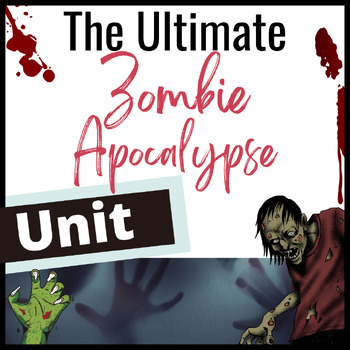
The Ultimate Zombie Apocalypse THEMED Literary Unit-- HIGH INTEREST BUNDLE

Exponential Growth and Decay Activity - Exponential Functions Zombie Apocalypse

Zombie Apocalypse All-In-One End of the Year Biology Project (21 items)

Zombie Apocalypse - Exponential Function - Pandemics - 21st Century Math Project

- Google Apps™
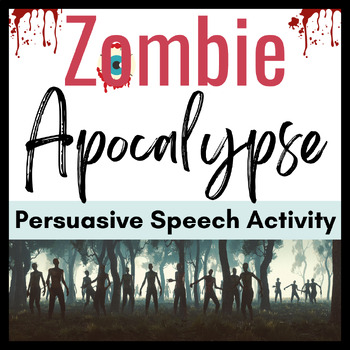
The Zombie Apocalypse -- Persuasive Speech Activity

Zombie Apocalypse Survival Quest

- Google Slides™

Economic Systems & the Zombie Apocalypse Economy (Distance Learning!)

Zombie Apocalypse Unit - End of the Year Project or Emergency Sub Lesson Plans

Cells: Zombie Apocalypse ! Plant Cell City Creation

Maslow's Hierarchy of Needs Zombie Apocalypse Plan

- Word Document File
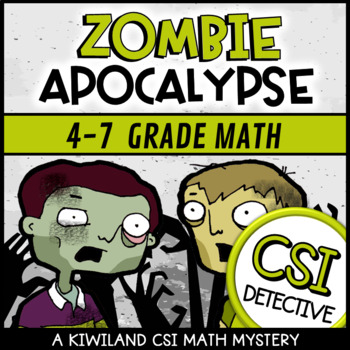
CSI Math Mystery Detective Zombie Apocalypse 4th 5th 6th 7th Grade Maths

Problem Based Learning: Can You Survive A Zombie Apocalypse ?

Zombie Apocalypse Geography (5 Themes of Geography) 2 Week Project - No Prep

Zombie Apocalypse : A Middle School Geography PBL Unit

Zombie Apocalypse Math Review (Code Breakers)

Zombie Apocalypse Problem Solving Activity

Zombie Apocalypse Ocean and Continent Identification

Halloween Argument Analysis Surviving a Zombie Apocalypse

Zombie Apocalypse - Input-Output Tables - Pandemics - 21st Century Math Project

STAAR 2.0 EOC ZOMBIE APOCALYPSE THEMED ESCAPE ROOM TEST PREP

Zombie Apocalypse Survival Quest (Printable Version)
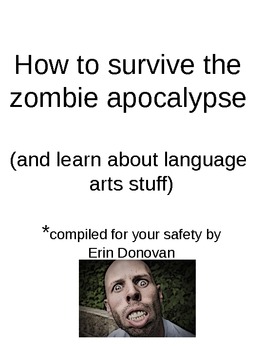
How to survive the zombie apocalypse and learn language arts stuff

- We're hiring
- Help & FAQ
- Privacy policy
- Student privacy
- Terms of service
- Tell us what you think
- Our Mission
The STEM Zombie Apocalypse
What can zombies teach kids about the brain? Images from popular culture provide an entry point to exploring science and math.

So many adults, including teachers, joke about not being able to do simple math or not being a “science person” that many students enter STEM classrooms with negative views. This creates a fixed mindset as students believe they need certain natural abilities to be successful in math and science. As educators, we need to create opportunities for students to overcome these deeply planted negative views.
Using images or ideas from popular culture gives students an entry point to explore science—they’re already experts, and they can use the confidence they have in that area to become more open to learning and experiencing how math and science are rooted in creativity and imagination.
Using a Zombie Apocalypse Scenario
I (Ed) have a background in neuroscience, so when I used to teach units on brain function in my classroom in Chicago Public Schools, I just assumed that students would be fascinated hearing about the brain. I later realized that my lessons were based on rote memorization and testing—there was little room for students to apply their learning in a real way.
So I decided to harness the power of zombies, and Amy and I created a series of workshop lessons in which students learn the structure and function of different brain regions by examining the various types of zombies that would arise from lesions to specific regions of the brain. We developed these lessons as part of a weeklong zombie camp, but we’ve also been able to break them up into two-hour chunks.
Concentrating on four regions—the cerebellum, amygdala, frontal lobe, and hypothalamus—we started by making paper brain hats, which gave each student a 3D model to refer to, and also set the tone that science does not always need to be serious.
Students next brainstormed characteristics of zombies: They move slowly, they’re hungry, they lack coordination, etc. We challenged the students to consider how a zombie virus would have to impact the brain to cause these characteristics. What part of the brain would need to be damaged to make a zombie move slowly? to make it angry?
We challenged students to apply their learning and explain what characteristics a zombie might have if the virus only corrupted select parts of the brain. If they observed a zombie that did not seem hungry or angry, but was moving slowly, what type of brain damage had it sustained? Could they describe the brain of a fast, hungry zombie?
Instead of taking a test, students created projects categorizing various zombies they might encounter based on how deeply the virus had impacted the zombies’ brains.
Some students wrote survival handbooks describing zombie types and ranking how dangerous a zombie would be based on the amount of damage its brain had sustained. Other students made public service announcement–style posters and life-size zombie cutouts illustrating how a zombie might look with that type of brain damage.
Students also wrote choose-your-own-adventure scenarios based on encounters with zombies with different brain lesions.
Students experienced deep learning as they held extended conversations debating whether they should run if they met a zombie with an intact frontal lobe or if the zombie had an intact cerebellum.
These connections helped students engage deeply and move forward with their inquiries into the brain.
Begging for More Math
The students were so excited about the choose-your-own-adventure format that they begged for more scenarios. We were able to make interdisciplinary connections by incorporating creative writing and math story problems.
Our story problems were long and were embellished with visual details and references to familiar locations in the area around us. For example, we gave students scenarios in which zombies were headed in their direction and they had to work out whether they had time to get to different locations for supplies and back to their hiding place before the zombies arrived.
The students were so excited about solving these problems that they decided to write their own story problems to present to other groups. They were using creative writing and math in a real way, and including various plot perspectives. (We did include rules that scenarios could not include violence, unnecessary gore, or death.)
These scenarios may not be real, but when students get excited and engaged in a topic, they move toward self-directed inquiry. One set of parents, for example, told us that their daughter was inspired to take out her math books to practice so she would be ready for the upcoming story problems. And throughout these camps we have seen kids grabbing books from our collection to learn more about zombies so that they can keep working.
It’s not enough these days to just know science facts—students need to be able to apply their learning in a creative manner and to use design thinking. Connecting to pop culture lends itself to this creativity and outside-the-box thinking.
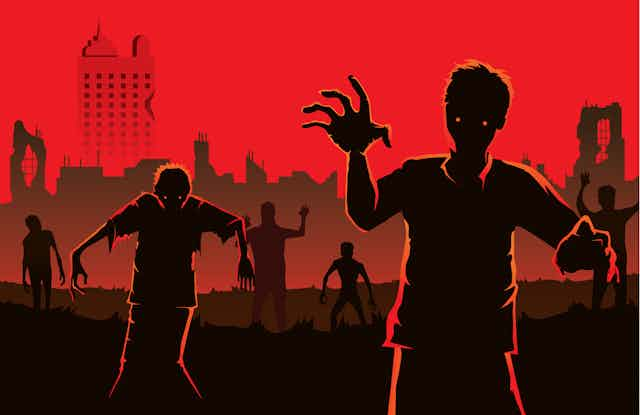
Teaching students to survive a zombie apocalypse with psychology
Professor in Behavioural Neuroscience, Bangor University
Senior Lecturer in Psychology, Bangor University
Disclosure statement
The authors do not work for, consult, own shares in or receive funding from any company or organisation that would benefit from this article, and have disclosed no relevant affiliations beyond their academic appointment.
Bangor University provides funding as a member of The Conversation UK.
View all partners
Playing games is ubiquitous across all cultures and time periods – mainly because most people like playing games.
Games involve rules, points, systems, as well as a theme or storyline and can be massively fun and engaging. And there is an increasing body of research that shows “gamification” – where other activities are designed to be like a game – can be successful in encouraging positive changes in behaviour.
Gamification has previously been used to teach skills to nurses , as well as in wider health settings – such as with the use of the app Zombies, Run! .
Broadly speaking, games work effectively because they can make the world more fun to work in. They can also help to achieve “optimal functioning” – which basically means doing the best you can do.
This can be seen in Jane McGonigal’s game and app Superbetter , which helps people live better lives by living more “gamefully”. It does this by helping users adopt new habits, develop a talent, learn or improve a skill, strengthen a relationship, make a physical or athletic breakthrough, complete a meaningful project, or pursue a lifelong dream.
Ground zero
This is also exactly what we’ve done at Bangor University. Here, students on the undergraduate course in behavioural psychology had one of their modules fully gamified. And it started when they received this message, after they enrolled on the course:
Notice to all civilians: this module will run a little differently. The risk of infection is high, please report to the safe quarantine zone in Pontio Base Five at 1200 hours on Friday 30 September. Stay safe, stay alert, and avoid the Infected.
Curiosity piqued, the class arrived at their first lecture of the semester to be greeted by “military personnel” who demanded they be scanned for infection prior to entry.
They were given a brown envelope containing “top secret” documents about their mission fighting the infection. The documents explained the game, and that the module had been gamified to enhance their learning.
What commenced next was the immersion. In addition to themed lectures and materials, the presence of actors and a storyline that was influenced by choices made by the class, students were given weekly “missions” by key characters in the game.
These online quiz-based missions prompted students to study the module materials between lectures to earn points. Points gained allowed students to progress through levels – from “civilian” to “resurrection prevention leader”. Points could also be exchanged for powerful incentives, such as being able to choose the topic of their next assignment, or the topic of a future lecture.
A life gamified
Part of our thinking behind wanting to teach in this way is because although students enrol at university, they don’t always perform optimally – instead intentions are often derailed by distractions.
At a psychological level, there are multiple competing signals trying to access behaviour – but only one can win. This discordance between goals and actual behaviour is called the “ intention action gap ”, and gamification has the potential to close this gap.
This is because, successful learning requires a student to set goals and then achieve them over and over again. Games use techniques, such as clear rules and rewards, to enhance motivation and promote goal-directed behaviour. And because education is about achieving specific learning goals, the use of games to clarify and promote engagement can be highly effective in providing clear guidance on goal-direction and action – which can make users less fearful of failure. In this way, gamification can result in students achieving better outcomes by optimising learning.

Positive reaction
The application of gamification to a module on behavioural psychology was a novel (albeit ironic) approach to demonstrate to students the very concepts they were learning.
When compared to the previous year’s performance and to a matched same-year non-gamified module, the gamification had a large impact on attendance – which was higher than both the non-gamified module, and the previous year’s group.

Many of the class also engaged with materials between lectures – such as the online “missions” to help them learn and review the content between lectures.
When asked their thoughts at the end of the semester, many students said they enjoyed the gamification and liked the immersive experience. Some even asked for more zombies.
Surviving education
Gamification is clearly well-suited to teaching behavioural psychology as it demonstrates directly some of the concepts students are learning. But it could also easily be adapted and applied to other subjects.
The psychologist, Burrhus Frederic Skinner said that :
Education is what survives when what has been learnt has been forgotten.
So while the students may well forget the precise definition “positive reinforcers” in years to come, they will know implicitly what they are and how to apply them thanks to the game. In other words, they have learned how to learn. And hopefully, their gamified experience will help them survive future “apocalyptic” challenges.
- Video games
- Computer games
- Gamification

Head, School of Psychology

Senior Lecturer (ED) Ballarat

Senior Research Fellow - Women's Health Services

Lecturer / Senior Lecturer - Marketing

Assistant Editor - 1 year cadetship

- Team Building
- Event Planning
Zombie Apocalypse Survival Training
If zombies rose up tomorrow, would your team be prepared? Ban together as humanities last hope in this apocalypse survival course that covers fortifying your base, tending to zombie inflicted wounds, and defending against the Undead.

Fully Hosted Event
Group size: 30 - 1040, themed challenge, what is zombie apocalypse survival training.
Zombie Apocalypse Survival Training tasks your team to prepare for the end of the world. Challenge your employees’ resourcefulness and problem solving skills as you train for potential scenarios you may face during the zombie apocalypse.
What's Included?
- Materials and props to practice treating wounds, defend yourself against zombies, etc.
- Instructors to train your team in survival skills.
Event Details
We can handle 30 to 50 all the way to large occasions of up to 1,040 people for your party or your meeting.
Time Needed
We will need 3 hours total to set up, host, and break down the event.
Space Requirements
Banquet table and chairs per every 15 people . Additionally, for outdoor events, we require a field visit at least four days prior to the event.
In recent years, the concept of zombie survival training has emerged as a unique and engaging team building event for companies looking to foster strong relationships and enhance communication among their employees. Though rooted in the realm of fiction, zombie survival training offers an exciting and immersive experience that can provide a number of valuable lessons and benefits for teams in a corporate setting.
Zombie survival training events are designed to simulate the high-pressure, high-stakes atmosphere of a zombie apocalypse, requiring teams to work together in order to survive. The adrenaline-pumping nature of these events encourages participants to break free from their typical work personas and interact with one another in a more authentic and genuine manner. As a result, team members can forge stronger connections and build trust, which can translate to improved collaboration and communication in the workplace.
One of the key components of zombie survival training is problem-solving. Teams must strategize, plan, and execute a series of tasks in order to overcome challenges and navigate the simulated apocalypse. This process helps to sharpen critical thinking skills, as employees must think creatively and adapt to changing circumstances in order to succeed. By working together to solve complex problems, team members can develop a greater appreciation for each other’s strengths and areas of expertise, which can foster a sense of unity and collaboration that carries over into the office environment.
Additionally, zombie survival training provides an opportunity for team members to practice their leadership and decision-making skills. In the high-pressure environment of a zombie apocalypse, employees must step up and take charge, making tough decisions on behalf of the team. This allows individuals to showcase their leadership abilities and build confidence in their own skills. Moreover, it encourages team members to support and trust one another in the face of adversity, which can lead to a more resilient and cohesive work unit.
In conclusion, zombie survival training can serve as a perfect team building event for companies, as it allows employees to develop their problem-solving, communication, and leadership skills while fostering a sense of camaraderie and unity. By providing a thrilling and engaging experience, these events can create lasting memories and positive associations that help to strengthen the bonds between team members, ultimately contributing to a more productive and collaborative workplace.
Zombies and Superheroes in the Classroom—Creating Lessons That Stick
Explore more.
- Experiential Learning
- Interactive Learning
- Simulations
- Student Engagement
S eeing the words zombies and superheroes alongside the terms ethics and Kennedy School of Government might seem like an impossibility. But to Chris Robichaud, a senior lecturer of ethics and public policy at the Harvard Kennedy School, the pairings make complete sense.
“I’ve always endeavored to find new and innovative ways to make ethics stick, to make the field come alive and be truly meaningful for students,” he says. “I’ve sometimes said that ethics and philosophy are wasted just on philosophers. Over many years, I’ve tried to take popular entertainment, with a focus on scary movies and superheroes (things I love), and show that you really can extract some interesting lessons in moral philosophy and ethics from that entertainment.”
For Robichaud, it’s not enough to teach interesting ethical principles. “I want students to see ethics all around them, not just as something we talk about in a classroom.” He uses stories, simulations, and active exercises to help bring the lessons to life for students in the classroom—and he hopes that once they leave that classroom, they’ll see that ethical decisions are all around us, in the popular entertainment we consume and in the challenges we face personally.
“I’ve always endeavored to find new and innovative ways to make ethics stick, to make the field come alive and be truly meaningful for students.” Christopher Robichaud
Today, it’s more important and more challenging than ever to engage students. Here, we’ll share how Robichaud intertwines some surprising themes into his curriculum, as well as the various pedagogical vehicles he uses to bring key topics to life for his students. We hope his techniques inspire you to think creatively in your own classrooms.
What Superheroes Can Teach Us About Ethics
In his course at the Harvard Extension School and SmithsonianX, Power and Responsibility: Doing Philosophy with Superheroes , Robichaud introduces philosophy through superhero stories. At the start of the course, students are randomly assigned a set of superpowers and given a series of tasks starting with: “Come up with a character that has these powers, tell us their backstory, and share what their objectives are going forth with these powers.”
“We begin to get them to think narratively about their powers,” he adds. Then, as the semester proceeds, students are asked to consider questions like the following:
What might be a challenging ethical issue that comes in front of your superhero?
How would you resolve that issue?
What would happen if you and other superheroes got together to debate some of the challenging ideas that come with a world that’s filled with superheroes?
Years ago, this online course was complemented with a live session in which Robichaud had students become their superhero characters and debate the same issues that actual Marvel characters debated: “Should there be an external agency that makes decisions about where to use superheroes and where not to? Or should superheroes be allowed to do this on their own?”
The point of these exercises is to engage students and get them to begin thinking ethically in a new, interesting way—and to have fun with it. “A principle behind everything I do is that having fun and learning deep and interesting things are not incompatible,” says Robichaud. “Kids get this, but we somewhat forget about it as adults; you can have fun creating a superhero character and giving that character ethical dilemmas and still learn a lot of deep stuff about ethics along the way.”
“A principle behind everything I do is that having fun and learning deep and interesting things are not incompatible. Kids get this, but we somewhat forget about it as adults.” Christopher Robichaud
Ethical Leadership Lessons from a Zombie Apocalypse
Another way Robichaud engages students is through the use of a simulation. And not just any simulation—one that drops students in the middle of a zombie apocalypse . Students play the role of a high-ranking advisor of a fictional country of their creation, and they must make complex ethical decisions to helps save their country.
“When we first started doing this, we were worried that it’s so fantastical that no one would be able to really enter into the fiction; that they’d always be a step removed,” he says. But within the first three minutes of the simulation, listening to a newscaster reporting on what’s happening, students are hooked.
“We see our students get totally and completely committed to trying to work their fictional countries through this crisis,” he says. “We see deep immersion. They’re taking these things to heart. There is emotional resonance going on and there’s stress in a good and productive way.”
In this high-stakes situation, students begin to see the tradeoffs, outcomes, and consequences of their decision-making. The simulation creates the right level of productive disequilibrium, says Robichaud, and then after that whole experience, students can step out of it and take part in a rich debrief. They aren’t in that zombie world anymore; they can look at the decisions they made in that world and draw some parallels to the decisions they will ultimately have to make in real life.
Robichaud says some of his students write months or years after taking part in this simulation, commenting that they are still thinking about the issues they wrestled with and the decisions they made during the exercise. “That stickiness I mentioned isn’t for the sake of being sticky. We want the lessons to be learned and remember, and for individuals to continue to reflect on it,” he says.
Bring Out Your Inner Storyteller
Robichaud encourages all educators to get creative in their own courses.
“Let’s start practicing over preaching in the classroom,” he says. “As educators, how often are we asking students to think outside the box, to be a little experimental, to try things and not be afraid to fail? Learning happens when we push against the boundaries; maybe we do stumble, but we stand back up again.”
It’s also important to remember that we’re all natural storytellers—we naturally get swept up into fiction, says Robichaud. “You don’t need to design an elaborate zombie simulation in order to benefit from some of the lessons that I’m talking about.”
“Let’s start practicing over preaching in the classroom. As educators, how often are we asking students to think outside the box, to be a little experimental, to try things and not be afraid to fail?” Christopher Robichaud
It’s very easy for educators to engage in role play in the classroom , for example. All you need are some basic roles and simple scenarios. Then, just give students straightforward instructions. “You should feel comfortable using the popular entertainment that you yourself love,” he says. “Students respond to authenticity and passion. I’ve had plenty of students come up to me and say, ‘Superheroes just aren’t my thing. But I love that you love superheroes. And heck, I got into it listening to you talk about them and then having to do these activities.’ So, if music is your thing, if television shows are your thing, lean on that and bring it into your learning experiences.”
Experiment by starting small, because something small is often all you need to get things going. And if it works, scale up and see what happens. “Today’s students are expecting educators to step up their game and come up with innovative ways to grab their attention,” says Robichaud. “Take a deep breath and try something new; you can definitely do this.”
Adapted from “Why Teach Students About Zombies & Superheroes” (SXSW EDU 2021) .

Christopher Robichaud is senior lecturer in ethics and public policy at the Harvard Kennedy School of Government and director of Pedagogical Innovation at the Edmond J. Safra Center for Ethics. He has devoted considerable energy to creating simulations that give professionals opportunities to explore ethical decision making in the context of practicing leadership skills and engaging in negotiations.
Related Articles

We use cookies to understand how you use our site and to improve your experience, including personalizing content. Learn More . By continuing to use our site, you accept our use of cookies and revised Privacy Policy .
- Virtual Experiences
- In-Person Experiences
- Hybrid Experiences
- Social Calendar [New]
- Experience FAQ
- Features & Benefits
- How Pricing Works
- Client Testimonials
- Happiness Guarantee
- Blog Articles
- Video Library
- View Experiences
14 Brain-Tickling Team Building Problems
By: Angela Robinson | Updated: March 27, 2022
This page includes our list of challenging team building problems.
Team building problems are activities that present dilemmas for teams to overcome. These exercises teach teams to brainstorm viable solutions, experiment, and reflect on results.
These activities are a type of problem solving exercise for work and are similar to team building puzzles and team building challenges .
Specifically, this list includes:
- team problem solving strategies
- problem solving scenarios for adults
- survival team building exercise
- simple team building activities
- problem solving games
So, check out our list!
List of team building problems
From Escape Rooms, to Frostbite, to Mission String-Possible, here is a list of some of the most challenging and engaging team building problems.
1. Egg Drop
Egg Drop is one of the most common problem solving games. The goal of the game is to avoid a Humpty-Dumpty situation by building a vessel that can help an egg survive a great fall.
To play, you will give each group an uncooked egg and allow the team to choose from a variety of construction materials, such as:
- toilet paper or paper towel tubes
- cardboard boxes
- masking tape
- wooden sticks
- sandwich bags
- plastic straws
- cotton balls
Teams will spend thirty minutes to one hour constructing a device to shield the egg from impact. Once time is up, groups will carry the containers to a balcony, ledge, or staircase, place the egg inside the receptacle, and drop the contraption. After the device drops, participants will open the container to see whether the egg survived.
This experiment teaches teams to use available resources, exercise creativity, and apply logical design.
2. Human Knot
There is a reason that the Human Knot crops up on all kinds of team building lists– this game is one of the most simple team building activities around. The exercise requires no special materials or lengthy instructions.
Human knot steps:
- Participants form groups of five to twelve members
- Group members assemble in a circle
- Players reach left hands across the circle and grab an opposite member’s hand
- Players reach right hands across the circle and grab a different participant’s hand
- Without letting go of the grip, team members must untangle the knot and form a ring
To unjumble arms and avoid pulled muscles, your team will need to communicate. In the same way that shuffling a deck of cards creates a brand new combination, each Human Knot is unique and requires an altered approach.
In addition to flexing your team’s problem-solving skills, the human knot serves as a bonding exercise. Gathering in close quarters helps teammates banish shyness and social barriers, and overcoming the collective challenge brings the group closer together.
See our full guide to doing the human knot with coworkers .
Get our free team building toolbox
- icebreaker games
- bingo cards

3. Mission String-Possible
Mission String-Possible is a yarn maze which combines dexterity with deductive reasoning. The game is part obstacle course, part race, and part riddle. This activity requires setup, but provides a high-energy challenge.
To create a yarn maze:
- Buy a different color of yarn for every team
- Thread yarn across a small space, being sure to loop the string around furniture, fixtures, and other strings
- Affix sticky notes to the thread with clues
- Allow each team 15-25 minutes to unravel the thread
- Challenge teammates to solve the puzzle at the end of the rope
An example of a riddle might be a combination to a lock located at the end of the yarn. Each sticky note contains a different number, and team members must order the numbers to guess the correct combination. I advise coordinating the color of the post-it notes with the string, because if the stickies fall off the string, then your teams might miss clues and fail the riddle.
4. Spaghetti Tower
The objective of this activity is for teammates to construct a tall tower using nothing but twenty sticks of spaghetti, tape, and string. Once complete, the tower must bear the weight of a single marshmallow without toppling.
To perform this exercise, split the group into teams of four to seven. After supplying teams with the necessary materials, you should give each group 20-30 minutes to complete the task. Teammates can break the spaghetti, but must keep the marshmallow intact.
Upon completing construction, each team must balance the marshmallow on the top of the tower. You can then measure the height of the still-standing structures, and name the group with the tallest tower the winner.
This game emphasizes group design, and is an especially apt activity for engineering teams. Yet all departments benefit from this group building challenge. As author C.B. Cook once said, “On our own, we are marshmallows and dried spaghetti, but together we can become something bigger.”
5. Lily Pads
Lily Pads is a group problem solving activity that turns team building time into a real life game of Frogger, minus the traffic. In this game, participants must move across the room, or the “pond,” stepping only on circles, or “lily pads.”
To play lily pads:
- Use masking tape to mark off a starting line and finishing line on the floor.
- Divide groups into teams of seven to twelve..
- Provide each team with six paper plates to use as “lily pads.”
- Direct teams to cross to the other side of the “pond,” by stepping on the lily pads.
Players cannot touch any space outside of the lily pad, otherwise all group members must return to start. The goal of the game is for the entire team to cross to the other side of the pond.
Lily Pad emphasizes that all members must reach the endpoint in order for the team to succeed, thus teammates scheme methods of getting every participant across the pond.
6. Shipwreck
The team building game Shipwreck strands employees on a hypothetical desert island together.
The game opens as the team’s ship sinks. Each team receives a list of 25-30 items, along with instructions that the group can select no more than ten items to bring to the island.
Sample shipwreck items:
- Empty bottle
- Toilet paper
- One mystery item of your choice, which cannot be a boat
You should fill the list with highly useful items so that your teams struggle to narrow down the choices. First and foremost, the teams must agree on a collective goal. Groups may wish to escape, survive comfortably on the island, or some mix of both. Based on the group objective, teammates must collectively decide which objects to prioritize. Every team member must explain the rationale behind each selection and persuade the other members to acquiesce.
After twenty minutes, invite all groups to share the lists and reflect on the activity. Groups can compare and contrast the lists, and if time allows, then you can try to form an overall consensus of a master list.
7. Escape from Pompeii
Escape from Pompeii is a team survival game that challenges groups to outrun an epic eruption. In the early days of civilization, Mount Vesuvius buried the ancient city of Pompeii under lava and ash. In this activity, you challenge your teams to imagine the group in the city with moments to escape.
To play escape from Pompeii:
- Tape off a small section of the floor, or lay a board down to make a “raft.”
- Split group into small teams.
- Give teams five minutes to fit on the raft.
All teammates must fit within the rectangle. Participants can arrange themselves in any combination, as long as all team members are aboard the raft and no part of any member’s body touches an outside surface.
This exercise fosters collaboration and group support. Escape from Pompeii also sharpens communication skills and prioritizes collective success over individual outcomes.
8. Shrinking Feeling
Shrinking Feeling is an exercise that encourages participants to develop team problem solving strategies. The concept is simple: as the surrounding space shrinks, groups must figure out how to fit all team members within boundaries.
Using rope, you will create a shape on the carpet. All team members must fit within the border, and no body part can touch any outside object. As soon as all team members assemble inside the boundary, invite the group to step outside the rope, and make the shape smaller.
Teammates must analyze, discuss, and execute team strategies to include every member within the perimeter. Shrinking Feeling underscores adaptability and group response to change.
9. Trading Pieces
Trading Pieces is a spin on the barter puzzle, one of the most well-known team building problems. In this exercise, groups race to complete a jigsaw puzzle, with a twist that each team receives a couple of the other teams’ pieces. To complete the puzzle, teams must negotiate with other groups and convince competitors to surrender pieces.
This version of the game ups the difficulty of the original barter puzzle with one extra condition: teammates can speak to each other, but cannot talk to other teams. In addition to persuading other teams to release pieces, participants must strategize how to silently broker the deal.
Trading Pieces practices persuasion and negotiation along with flexibility and creative thinking.
10. Founders Keepers
During Founders Keepers, your teams will need to establish laws and respond to threats to create a functional new kingdom. To play the game, you should instruct teams to choose a name for the country and create five central laws. Afterwards, you can prompt your colleagues with some of the challenges on the list below.
Sample founders keepers challenges:
- Neighboring country attacks
- Drought wipes out half the crops
- King caught in a scandal
- Peasants protest
- Kingdom runs out of money
- Country cannot communicate with outside lands
Teams must respond to these disasters while staying loyal to the core laws. This exercise serves as a model for upholding values in times of crisis. Unlike the other challenges on this list, the problems posed in this activity require diplomacy and discussion as opposed to immediate action. This exercise challenges the team to think of long-term consequences of proposed solutions instead of merely reacting to the situation at hand.
11. Escape Rooms
Escape rooms are one of the most popular problem solving scenarios for adults. These entertainment venues are immersive investigative experiences. Many rooms revolve around themes such as haunted houses, spy missions, or outer space, and some locations rely on actors to propel the story. All escape rooms pose puzzles that groups must solve together using abilities like critical thinking, time management, observation, and composure. These rooms provide elaborate scenarios, challenging riddles, and subtle clues that teams must work together to decipher.
Chances are, an escape room or two already exists in your vicinity. A simple Google or Yelp search can help you locate these venues. You may even score a group rate.
Check out this list of DIY escape room puzzles , and these online escape rooms for teams .
12. Frostbite
Frostbite is a survival team building exercise that summons teammates to imagine an arctic expedition gone wrong. In this team challenge, participants must construct a shelter in the face of an upcoming storm. However, a bad case of frostbite prevents the team leader from using hands, while snow blindness leaves all other team members blind.
To play frostbite:
- Split the group into teams of 4-5.
- Designate a leader on each team.
- Explain the scenario.
- Bind the leader’s hands, and blindfold all other group members.
- Allow teams 30-45 minutes to build a structure out of playing cards, cardboard, rubber bands, tape, and staples.
- Turn on a small electric fan and find out which “tents” can withstand the “artic wind.”
Frostbite flexes group decision making and adaptability, and challenges teams to find ways to triumph even despite limitations.
13. Apocalypse How

Apocalypse How compels teams to strategize ways to survive the end of the world. To play, simply divide participants into teams of four to six, and provide groups with a catastrophe, such as zombie attack, time-traveling dinosaurs, asteroid shower, or volcanic eruption.
To spice up the discussion, you can periodically hand out specific scenarios to which groups must respond.
Sample scenarios:
- Car engine dies
- Electricity goes out
- Cell phone communication ceases
- Deep gash on your leg
- Run out of food
Apocalypse How exercises group problem solving and negotiation, and reminds teams to stay calm and think logically in the face of crises.
14. See Saw
My middle school gym class involved an outdoor ropes course. In one course challenge, my classmates and I had to balance the entire team on a giant see saw. This exercise may seem like one of the easiest imaginable team building problems imaginable, but completing the challenge is actually quite tricky.
To ensure that neither board end hits the ground, group members must distribute weight evenly. Teammates of relatively equal weight must step onto the see saw at the same time, otherwise the board will hit the ground, and the whole activity will restart. This maneuver requires a great deal of coordination and analysis, along with careful strategy.
The See Saw activity affirms that coordination requires careful consideration and effort. When working with a group, sometimes balance and timing are vital components to group success.
Team building problems help groups develop techniques to resolve on-the-job issues. For more information on nurturing competencies such as communication, compromise, and creative thinking, check out more of the resources below.
Overcoming obstacles as a group requires a great deal of trust, and these team problems teach teammates to depend on each other.
Next, check out this list of problem solving books .
Book wildly fun team building events with expert hosts

FAQ: Team building problems
Here are answers to some of the most commonly asked questions about team building problems.
What are team building problems?
Team building problems are challenges that prompt groups to respond to situations with ingenuity and cooperation. Examples of team building problems include the Spaghetti Tower, the Human Knot, and the Egg Drop.
What are team problem solving skills?
Team problem solving skills are competencies that help groups conquer problems quickly and with minimal conflict. Team problem skills include decision making, deliberation, explanation, and delegation.
Why is problem solving important in a team?
Collective problem solving is a different process from individual problem solving. Group problem solving requires skills such as active listening, persuasion, and compromise. Teams need to practice the art of consensus building and collective decision making. Team building problems provide colleagues with scenarios that help sharpen these skills.
Does solving team building problems together really work?
Though it may seem silly to hold hands, assemble puzzles, build spaghetti towers, and debate about zombies, these kinds of activities encourage objective analysis, verbalization of logic, and compromise, all valuable teamwork skills. If nothing else, team building problems encourage groups to communicate effectively.

Author: Angela Robinson
Marketing Coordinator at teambuilding.com. Angela has a Master of Fine Arts in Creative Writing and worked as a community manager with Yelp to plan events for businesses.
Leave a Reply Cancel
Your email address will not be published.

Marketing Coordinator at teambuilding.com.
Angela has a Master of Fine Arts in Creative Writing and worked as a community manager with Yelp to plan events for businesses.
- 45,000+ clients including Apple, Amazon, Google and NASA
- 50,225+ five star reviews on Google
- #15 on Inc 5000's List of Fastest Growing Private Companies in America for 2022
- 80+ happy remote employees
We lead wildly fun experiences for teams with 1,000,000+ players to date.

4.96 / 5.0 rating on
50,225 Google Reviews
Get our free team building tool box
$49 value at no cost..
- May as well check it out?
- 100+ tested icebreaker questions
- 24+ themed Bingo generators
- 5+ PDFs (including the 8% Rule)
- 2024 team building calendar and more...

Enter your email for instant access

IMAGES
VIDEO
COMMENTS
In this desert island survival activity, students use their critical thinking and problem-solving skills to survive being stranded on a desert island. Procedure Set the scene by drawing a boat on the board. Tell the students to imagine that they are on the boat and to suggest what they are doing there. Then, draw lightning on the board.
Students are placed into the role of a person during the zombie apocalypse and are given fifteen items in which they must rank their order of importance in terms of survival. The students then compare the ranks with the correct answers to determine how fit they are to survive the apocalypse. INSTRUCTORS: please feel free to change the order of ...
SURVIVAL STEM: SUITABLE FOR AGE 11-14 Can you survive a zombie apocalypse? STEM Learning activity resources Key information AGE RANGE: 11-14 SUBJECT LINKS: design and technology, computing, engineering, physics and maths. DURATION: a range of activities from 20 to 60 minutes - at least 6 hours in total. FLEXIBILITY: complete the whole programme over a half term or choose individual
One bite and you will become one of them. technology can help you survive a zombie apocalypse - from making a barricade to keep them out, to communicating with other survivors using Morse code. Digital and Essential Skills. Throughout this booklet, activities highlight skills sets that can be enhanced by taking part.
Zombie Neuroanatomy Frontal Lobe: • Functions: planning, reasoning, speech, movement, and problem-solving. • The frontal lobe is critical for executive functions such as reasoning, planning, and problem-solving. Zombies can see and sense us, but they have a hard time using executive functions when interacting with humans.
The team members then have 30 minutes to solve a series of puzzles and clues to "unlock" the door and escape a zombie apocalypse. A volunteer zombie will hold onto a rope in the corner of the room. The zombie will start off with half a yard of slack in the rope. Every five minutes the zombie's rope will extend by an additional half a yard.
Zombie apocalypse settings are a familiar trope in the arts: film. Night of the Living Dead (1968) is an American film that basically defined the modern " cannibalistic cadaver" zombie. Train to Busan (2016) is a terrific Korean zombie movie that doubles as a runaway train movie. S haun of the Dead (UK, 2004) and Juan of the Dead (Cuba ...
2. Event activities - Decide on preparedness activities, snacks, or other fun events. Plan to host stations for distributing preparedness information. 3. Promotion - Invite people to your zombie apocalypse party in-person and online. 4. Host the event - Set up activities and decorations and have fun! ZOMBIE APOCALYPSE PARTY
Zombie Apocalypse Problem Solving Activity. by . Danis Marandis. 4.9 (39) $1.99. Zip. This zip file (with both an editable Microsoft Word document as well as a PDF version) includes an activity that can be used as an ice-breaker or as part of the cognition unit in Psychology or AP Psychology as a demonstration of problem-solving.Students are ...
We developed these lessons as part of a weeklong zombie camp, but we've also been able to break them up into two-hour chunks. Concentrating on four regions—the cerebellum, amygdala, frontal lobe, and hypothalamus—we started by making paper brain hats, which gave each student a 3D model to refer to, and also set the tone that science does ...
Adapted for this desmos activity from a problem created by Wendy Menard (@wmukluk) and Julie Reulback (@jreulbach). The Zombie Apocalypse! • Activity Builder by Desmos Classroom
Zombie Game. It's zombies versus humans in this fun game that combines strategy with graphing practice. An ode to the classic Battleship game, this zombie apocalypse game asks kids to practice plotting points on a coordinate grid. Find all of your opponent's objects and you win!
How zombies and gaming can help students learn. ... Teaching students to survive a zombie apocalypse with psychology Published: May 22, 2017 7:48am EDT ... where other activities are designed to ...
This lesson introduces the concept of a disease spreading through a human population using fictional zombies as the agent of infection. Teaching time: one to two 45 minute class period(s) As a result, students will: Interpret graphs to make predictions. Use simulations to understand the symptoms of a fictional disease and see how the disease ...
In conclusion, zombie survival training can serve as a perfect team building event for companies, as it allows employees to develop their problem-solving, communication, and leadership skills while fostering a sense of camaraderie and unity. By providing a thrilling and engaging experience, these events can create lasting memories and positive ...
Summary of lesson. Science Objectives. • Students will investigate the spread of a disease through a population, using zombies as a model. • Students will learn or review the basic functions of various parts of the human brain. • Students will investigate and discuss factors dealing with immunity and vaccines. Vocabulary.
Ethical Leadership Lessons from a Zombie Apocalypse. Another way Robichaud engages students is through the use of a simulation. And not just any simulation—one that drops students in the middle of a zombie apocalypse.Students play the role of a high-ranking advisor of a fictional country of their creation, and they must make complex ethical decisions to helps save their country.
This Ted-ED Riddle Wants You to Use Maths to Escape Zombies. 18 November 2016. By Josh Hrala. (TED-Ed/YouTube) Here's a riddle for you: pretend you're a grad student who just got an awesome internship in a remote mountain lab where it's just you, a lab assistant, an old professor, and a janitor. As you explore the complex on your first day, all ...
Lily Pads is a group problem solving activity that turns team building time into a real life game of Frogger, minus the traffic. ... Apocalypse How. ... Though it may seem silly to hold hands, assemble puzzles, build spaghetti towers, and debate about zombies, these kinds of activities encourage objective analysis, verbalization of logic, and ...
Very few are able to provide proper containment of the pathogens, or indeed zombies themselves (Smith, 2015). In addition, herd immunity is just not going to work, once you are infected you will become a zombie, there are very few cases of natural immunity. We simply cannot reply on a vaccine solving the problem.
CASE STUDY 1: Zombie Apocalypse to teach Design Thinking to a team of ~12 people I was invited to train one of the ConsenSys offices on design thinking (DT) methods, and we wanted to include a high-energy activity to reinforce the day's learning modules and get people to quickly test using DT in a way that would be less high-stakes than their ...
Find out what kind of funny you are and take the free "Humor Persona" Quiz here https://humor.me/quizhtwytHighlights for the team-building game "Zombie Tag."...
Introduction and rationale. The ZA is a scenario-based learning (SBL) activity. As a "practical expression of situated learning," SBL is based on the assumption that "knowledge cannot be known and fully understood independent of its context" (Errington, Citation 2011, p. 87).SBL encourages students to explore multiple perspectives of a problem and to work together to find collaborative ...